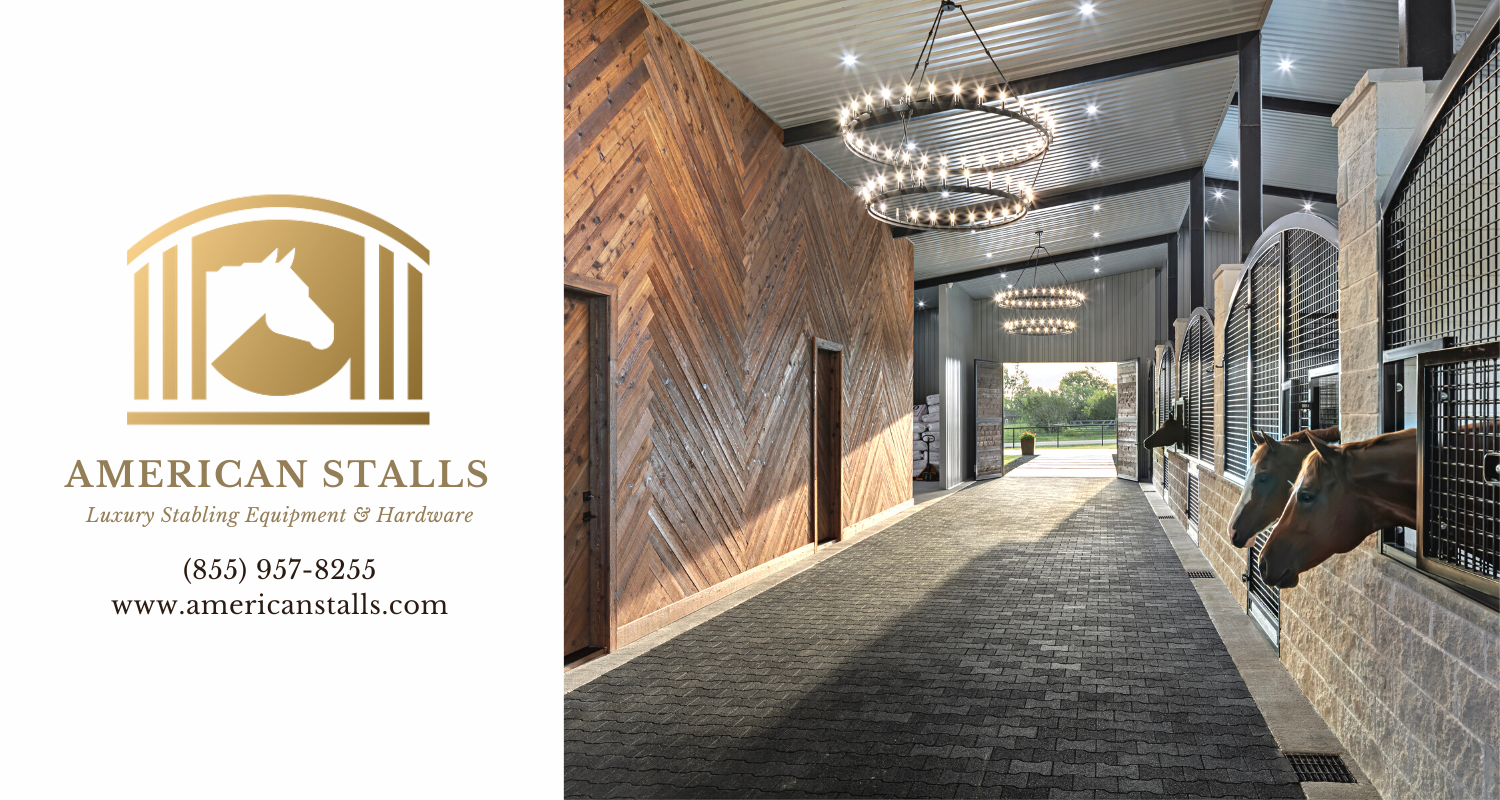Whether you’ve been following Stable Style for months or years, chances are you’ve put a lot of time into planning your dream horse barn. This helpful blog post is brought to you by American Stalls – they know horse stalls.
There are hundreds of potential stalls styles to choose from, but only two types of stall doors – sliding doors and hinged doors. Your stall door is a very important barn component. It’s one of the most important parts of your horse stall(s). This door will be opened and closed thousands of times over the years.
It’s imperative to make a well-informed decision. Just like any option, each door type comes with a list of pros and cons.
Hinged Stall Doors

Hinged, swinging stall door
Hinged stall doors are traditionally more common than sliding doors.

That being said, hinged stall doors tend to be slightly less practical than sliding doors. This is because they must swing out into the barn aisle. It means that your barn aisle must be fairly wide – even more so if you have two rows of stalls directly facing each other. If you are considering hinged stall doors, we suggest you consider the following:
Aisle Width: The aisle should be wide enough to allow for the hinged door to safely open and close.
Aisle Leveling: The barn aisle needs to be tempered and leveled. This is crucial since the bottom of a stall door can get stuck on uneven flooring. This is why we recommend if you choose a hinged door, allow for a few inches of clearance between the barn floor and the bottom of the stall door. If your barn aisle is full of hills and bumps, we would advise against a hinged horse stall door. Often times older barns have uneven floors, which makes hinged doors a wonderful choice.
A final thought, hinged horse stalls are very aesthetically pleasing – allowing for an elegant appearance. They also allow plenty of natural light and ventilation to pass through the stall.
American Stall’s New Hinged Designs

Adronis

Milano

Manchester

Versailles
Sliding Stall Doors

Sliding stall doors might lack the open appearance of a hinged door, but they are a great investment for the barn for many reasons.
Sliding doors offer a practical, space saving solution since they don’t swing outward into the barn aisle. This brilliant feature makes sliding doors a perfect choice for busy facilities

Generally, sliding doors on stall fronts are preferred for safety reasons – including:
- Unexpected movement. A hinged door that isn’t latched can easily get pushed open by the wind, injuring a horse or human passing through the aisle.
- A hinged door needs to be closed when the horse leaves their stall. This gives the handler another action to do when leading a horse out of its stall. This might not be ideal when handling a fresh or spooky horse on its way to turnout. Ideally, a safe design ensures that least amount of handling and steps.
- If the latch on a hinged door fails, a horse can potentially get loose from its stall much easier. Sliding doors will remain closed.
- Sliding doors can be left open when horses are out of their stalls. This makes it easier for barn managers or other humans to take a quick tally of which horses are in the barn.
- Again, when you are leading the horse back into the stall and the sliding door has been left open, there is less action involved to ultimately close the stall door.
- Finally sliding doors are recommended from a fire safety standpoint. In the event of a fire emergency, you have very little time to make crucial, life-saving decisions. With sliding doors, you simply pull the pin latch or push up the latch and slide open the door as you move to the next stall.
American Stall’s New Designs
Here are the latest renderings for American Stall’s new custom stalls with sliding doors.

Jeffersonian

Roosevelt

Washington
Do you have questions about your next barn project? Contact American Stalls today. They offer a wide variety of stall gates, custom options and more!






